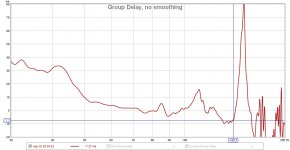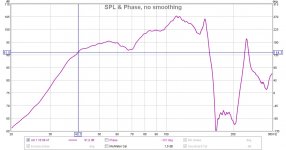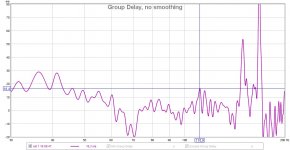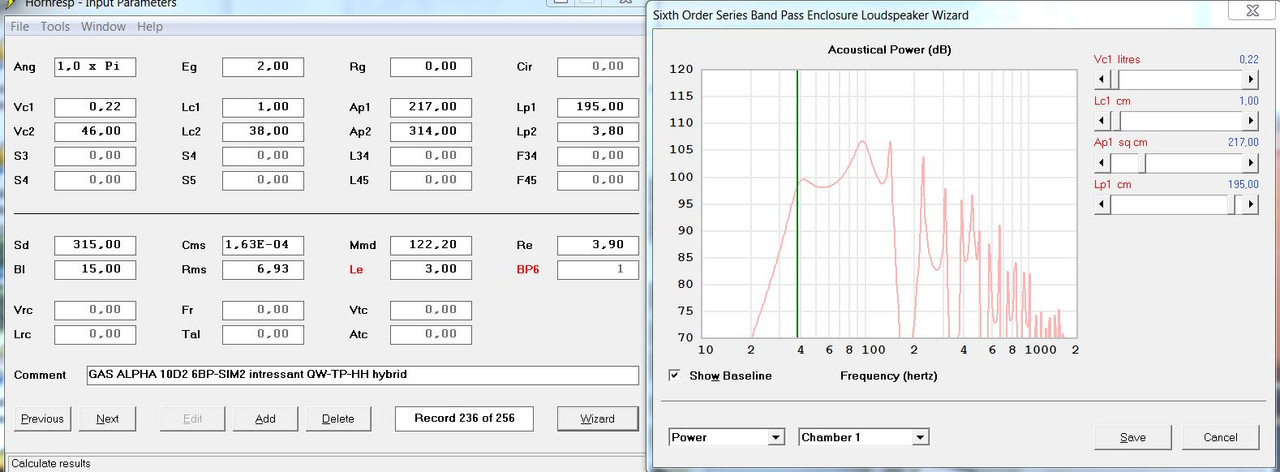
Some quality time with the 6th order bandpass function in Hornresp gave results.
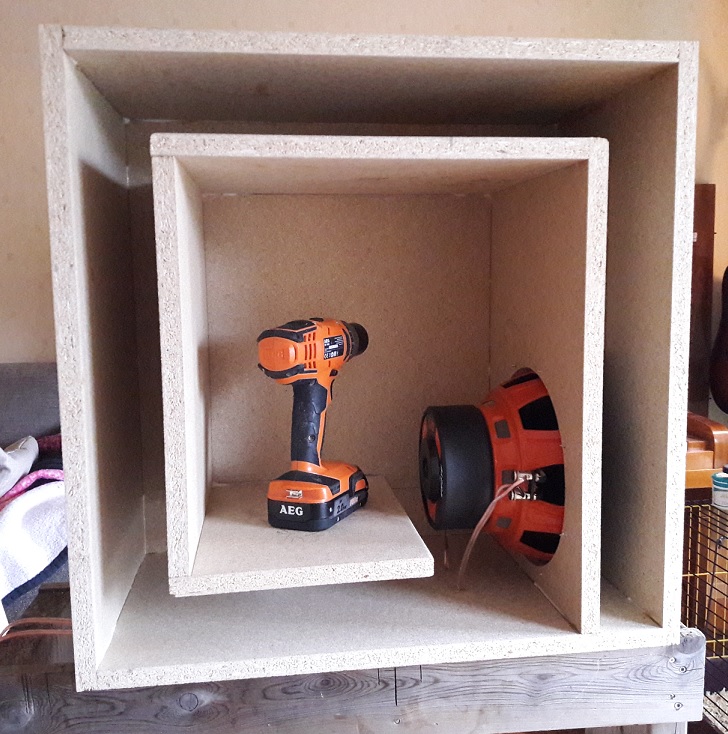
Almost done building. A last picture of the interior of the box.

A measurement with my Umik 30 cm outside the mouth.
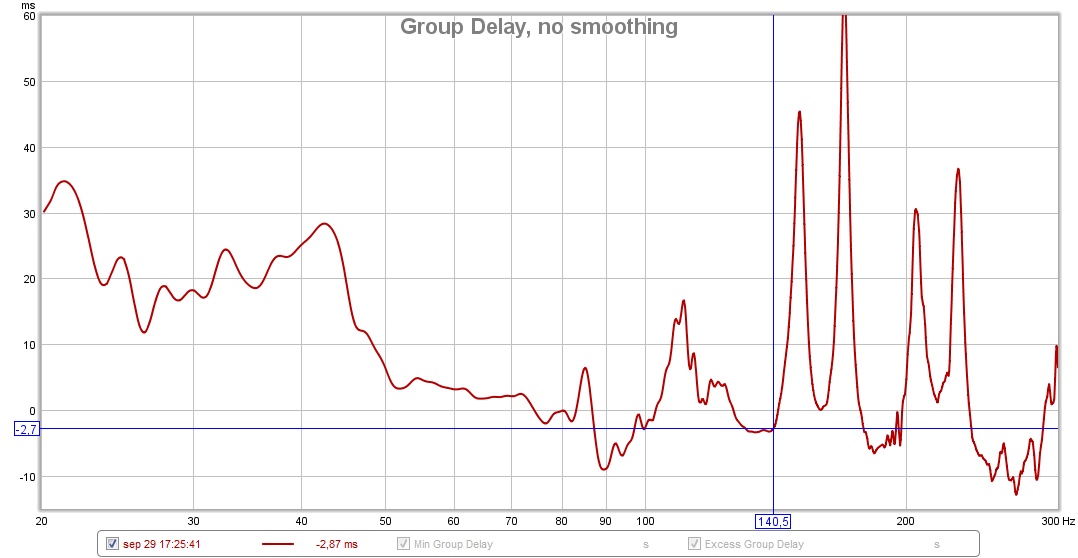
Group Delay.
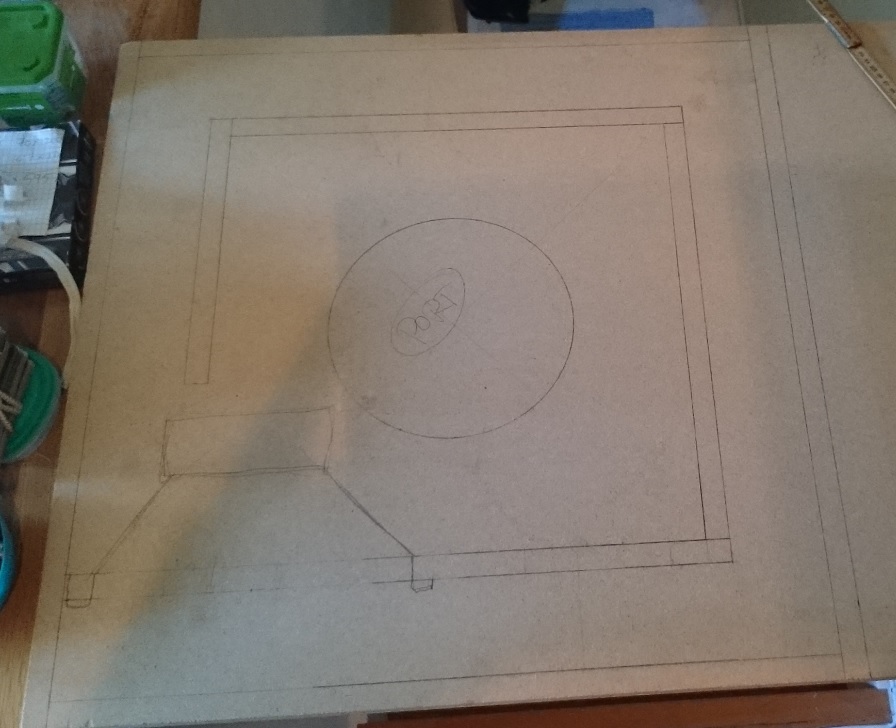
A more explanatory drawing showing where the port is located.
When I get some more pictures I will show the finished box with its port.
This is a Helmholtz version of the ROAR, inspired by Tom Danleys BC415 (but much smaller and only a single driver).
I hate Helmholtz like I hate root canal work, but when comparing a 8th order bandpass design with my ROAR i got this idea of how to properly drive a Helmholtz resonator. The 8th order bandpass did play loud with continuous tones but the driver will bottom out very easily with transient signals. It takes several cycles before the Helmholtz resonance reaches full amplitude and starts resisting cone motion, which allows the driver to bottom out in a normal Helmholtz based speaker enclosure. A quarter wave resonator resists transient cone motion immediately and will transfer the energy much more efficiently to the Helmholtz resonator in this case. A simple tapped pipe driven with an 8 inch Alpine type-r can have a 30 cm air column amplitude at resonance, while the driver only have 10 mm xmax. The quarter wave resonator will be much better suited to drive the Helmholtz front resonator.
This is some of the thought behind this design.
It is a fun and capable loudspeaker. I will try to get some outdoor measurements once we have some calm whether outside.
Cheers,
Johannes
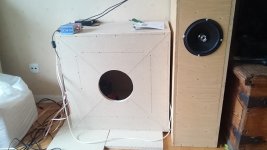
Here it stands close to the wall. The port is a 19 mm deep 200 mm diameter hole in the front piece.
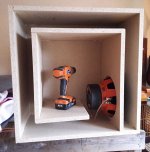
Here is a shot of the interior. It is a very simple design. Easy to build. I built this first prototype in 3 hours.
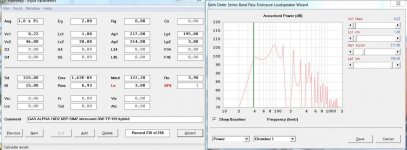
Simulation in Hornresp.
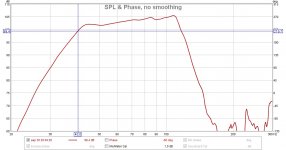
Here is a new measurement as it is used. The microphone is 1 cm outside the port. There is a 48 dB/octave LP filter at 100 Hz and a 1,5 dB Q = 1,0 EQ point at 45 Hz.
I hope you can see these pictures. I can see the pictures in my previous post from several different computers and even my cell phone.
My son heard it today when he got home from a friend and his reaction was "WOW!!! It is amazing, very powerful and clean!!!" He was immediately impressed.
Cheers,
Johannes
How do you remove the driver from the completed box? I don't see an access panel.
GD looks a bit high, but the response looks pretty smooth after EQ. What does the GD look like after the EQ is applied?
Does the response vary at different SPL levels? I'm wondering how linear that vent is going to be...
GD looks a bit high, but the response looks pretty smooth after EQ. What does the GD look like after the EQ is applied?
Does the response vary at different SPL levels? I'm wondering how linear that vent is going to be...
I hope you can see these pictures. [\QUOTE]
Can see them all just fine; my kind of little project!
GM
How do you remove the driver from the completed box? I don't see an access panel.
With a tigersaw. This is a cheap and fast prototype in 19 mm particle board. I just wanted to test my idea and see if there is any benefit to drive a Helmholtz frontchamber with a tapped pipe. Now that I have verified the design I will probably build two of these properly out of plywood (with access panels).
Does the response vary at different SPL levels? I'm wondering how linear that vent is going to be...
The port has the same radiating surface as the driver. I have not had the chance to test it at high power levels yet. With 10 watts indoors everything rattles. It does have a very physically powerful and tactile character.
Tom Danleys BC415 does not seem to have a much larger port compared to the total cone area of the four 15 inch drivers.
The behavior of the vent at high power levels is very fundamental to this design, and is something I will experiment with. Since it is an inherently non linear function, it is something I need to play with in real life. I guess Tom Danley uses something like COMSOL to model and optimize this kind of design.
I hope I can post more measurements soon. The wind has died down considerably today, so I will try to do some outdoor measurements.
With 500 watts from a T-Amp E800, HP 48 dB/octave at 25 Hz and LP 48 dB/octave at 100 Hz we hear no port chuffing or noise. My whole house is buzzing violently, with paintings rattling hard against the walls etc.... We have to redo the tiles in our kitchen. They did not like the vibrations.
a bit larger with Dayton's 14mm xmax 12" subwoofer
It looks really nice!!
Have you made a drawing to determine if it is a buildable and feasible design??
Right now this 6th order TPBP is placed under my computer table, crossed over to a pair of Dayton PS95-8 in 12 liters closed boxes, 48 dB/octave with a MiniDSP 2X4HD. With a few points of some gentle EQ and 1 ms delay, it sounds really good!!!
Music tends to be reproduced with a great punch and energy, making it very addictive and fun. The 6th order TPBP combine seamless with the Dayton fullrange drivers, making them sound much more powerful and extended. The TPBP integrates well without any hint of drawing any attention to itself.
I am very happy with this cheap first prototype. I even think it sounds nicer then the ROAR12, which tends to overpower and exaggerate everything when used indoors. The ROAR12 always acts like a furious Caterpillar D9, even when called upon to reproduce delicate music.
I guess the Helmholtz frontchamber softens the sharp edges (the non linear nature of music) somewhat, whereas the ROAR12 tends to exaggerate the sharp edges in music making the non linearity more pronounced.
Music tends to be reproduced with a great punch and energy, making it very addictive and fun. The 6th order TPBP combine seamless with the Dayton fullrange drivers, making them sound much more powerful and extended. The TPBP integrates well without any hint of drawing any attention to itself.
I am very happy with this cheap first prototype. I even think it sounds nicer then the ROAR12, which tends to overpower and exaggerate everything when used indoors. The ROAR12 always acts like a furious Caterpillar D9, even when called upon to reproduce delicate music.
I guess the Helmholtz frontchamber softens the sharp edges (the non linear nature of music) somewhat, whereas the ROAR12 tends to exaggerate the sharp edges in music making the non linearity more pronounced.
The 1936 RD-8 was cool enough to star in a movie
Earthworm Tractors : Free Download, Borrow, and Streaming : Internet Archive
Earthworm Tractors : Free Download, Borrow, and Streaming : Internet Archive
"The ROAR12 always acts like a furious Caterpillar D9, even when called upon to reproduce delicate music." Hence, ROAR!
A very creative way to design a BP6! I thought TD's BC enclosure was a FLH?
The BC enclosure is a FLH. but this method of enclosure came about from trying to reverse engineer or guess at what that enclosure was. Caught the attention of JAG if I recall correctly.
A very creative way to design a BP6! I thought TD's BC enclosure was a FLH?
Thanks! It is a very simple and easy way to design and build a BP6, but the quarter wave based first section makes it sound much better then pure helmholtz based BP6.
Yes, my current understanding of the BC series is that it is some kind of FLH/BP4 hybrid.
Since I wanted a very easy to build small "shallow mount" kind of bass box I used a non expanding tapped pipe as the first section.
do you have any plans for a larger box loaded with 2 or 4 subwoofers?
Ofcourse!!!!
I am working on several variations of this design, and a 4 woofer version should be quite fun and capable.
And how would you model this
With the BP6 simulation tool in Hornresp. You can see the way I simulate in post #3 above.
Cheers,
Johannes
- Home
- Loudspeakers
- Subwoofers
- ROAR with Helmholtz front resonator
